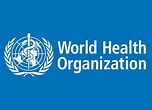In a concerning development for global maternal health, the World Health Organization continues to identify maternal sepsis as the third leading cause of maternal mortality worldwide, contributing significantly to overall sepsis-related deaths globally.
According to recent WHO data, maternal sepsis a life-threatening condition resulting from infection during pregnancy, childbirth, post-abortion, or postpartum periods poses severe risks not only to mothers but can also lead to neonatal infections and other adverse outcomes for newborns.
The global statistics paint a grim picture: approximately 800 women die daily from pregnancy or childbirth-related complications, with most of these deaths being preventable or treatable. Between 2003 and 2009, maternal sepsis was responsible for 11 percent of all maternal deaths worldwide. More recent data from the Global Burden of Disease estimates that in 2019 alone, about 21 million cases of maternal sepsis and related infections occurred, resulting in approximately 17,000 deaths.
The situation in Nigeria is particularly alarming, with a high maternal mortality ratio of 512 deaths per 100,000 live births. The 2018 Nigeria Demographic and Health Survey reveals that while postpartum hemorrhage accounts for 23 percent of these deaths, maternal sepsis is responsible for 17 percent, and abortion-related complications cause 11 percent.
In response to this ongoing crisis, the WHO had previously published recommendations for prevention and treatment of maternal peripartum infections, aiming to provide a foundation for strategic policy and programme development. These efforts focus on improving the provision and uptake of quality antenatal, intrapartum, and postnatal care for all women and newborns.
The WHO emphasizes that reducing maternal and neonatal sepsis is critical to achieving the Sustainable Development Goals and implementing global health initiatives effectively. To further advance best clinical practices in labour and childbirth, the organization has announced it will review evidence for a recommendation related to antibiotic prophylaxis during labour for vaginal births.
“The development of this new recommendation has been prioritized. A Guideline Development Group meeting will be held on April 9–10, 2025, to review the evidence base on this recommendation,” the WHO stated.
In accordance with requirements from the WHO Guidelines Review Committee and the WHO Compliance, Risk Management and Ethics Office, the agency has posted short biographies of the Guideline Development Group members to ensure transparency. The general public has been invited to review the experts and stakeholders involved and provide feedback regarding any member deemed to have significant conflicts of interest with respect to the terms of reference for this group.
These ongoing efforts reflect the WHO’s commitment to addressing the persistent challenge of maternal sepsis, which continues to claim thousands of preventable maternal lives annually across the globe.







